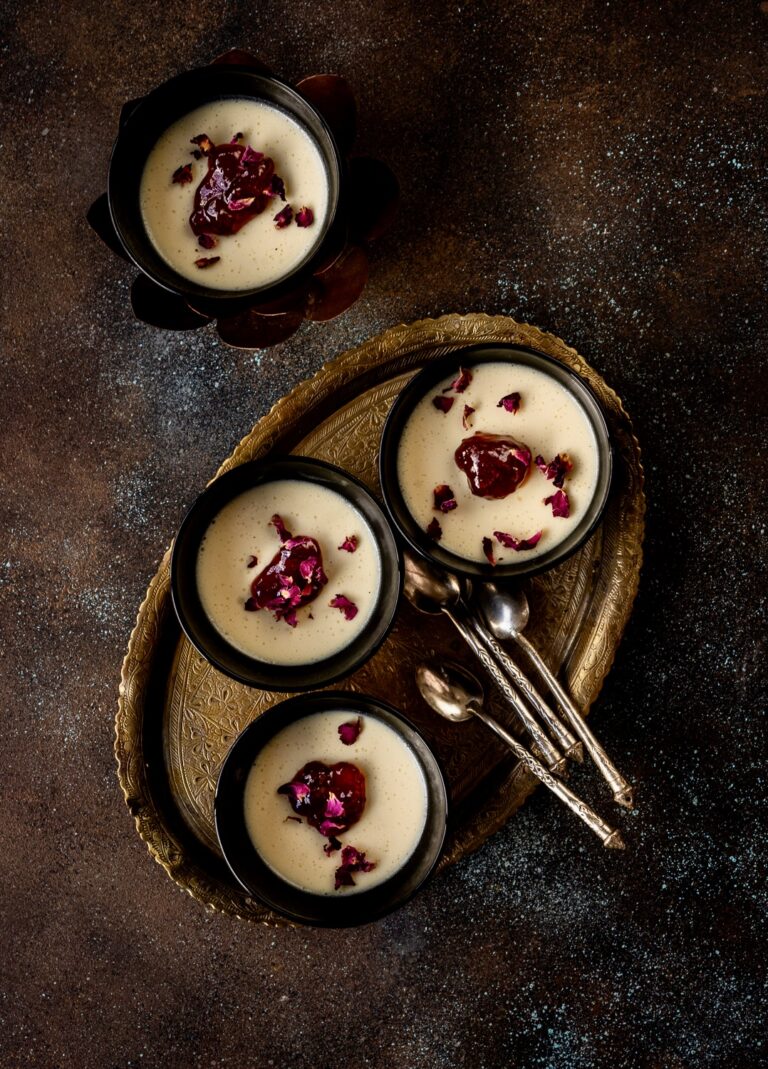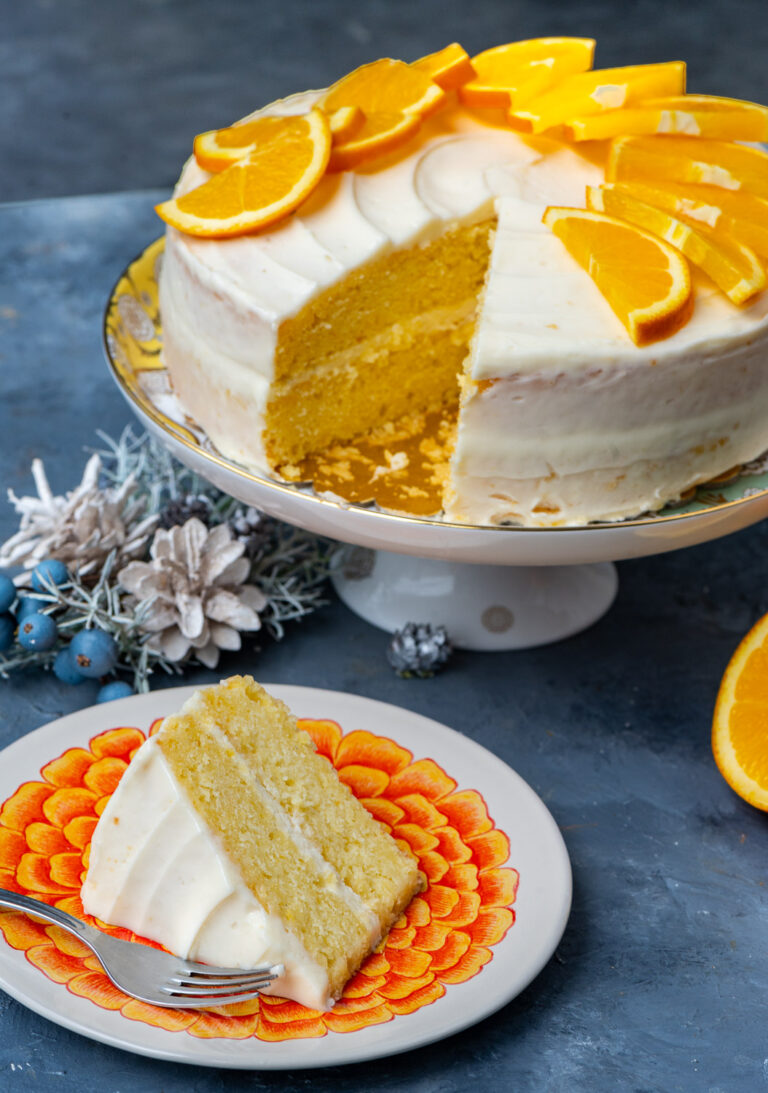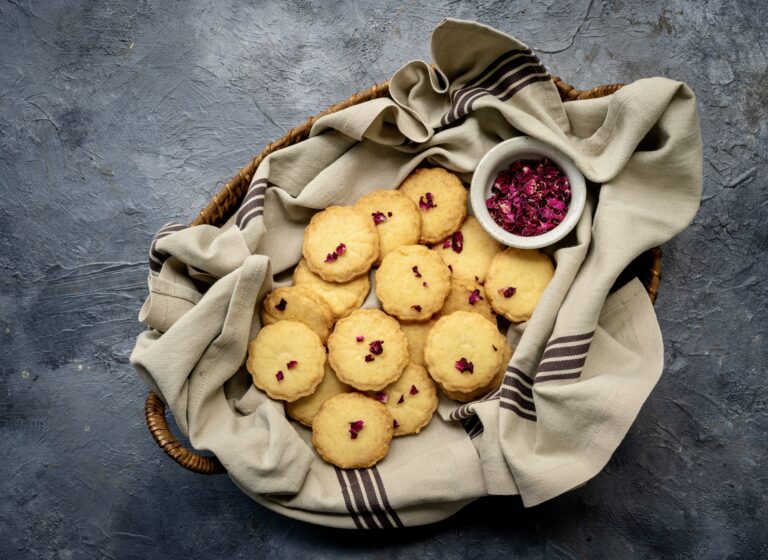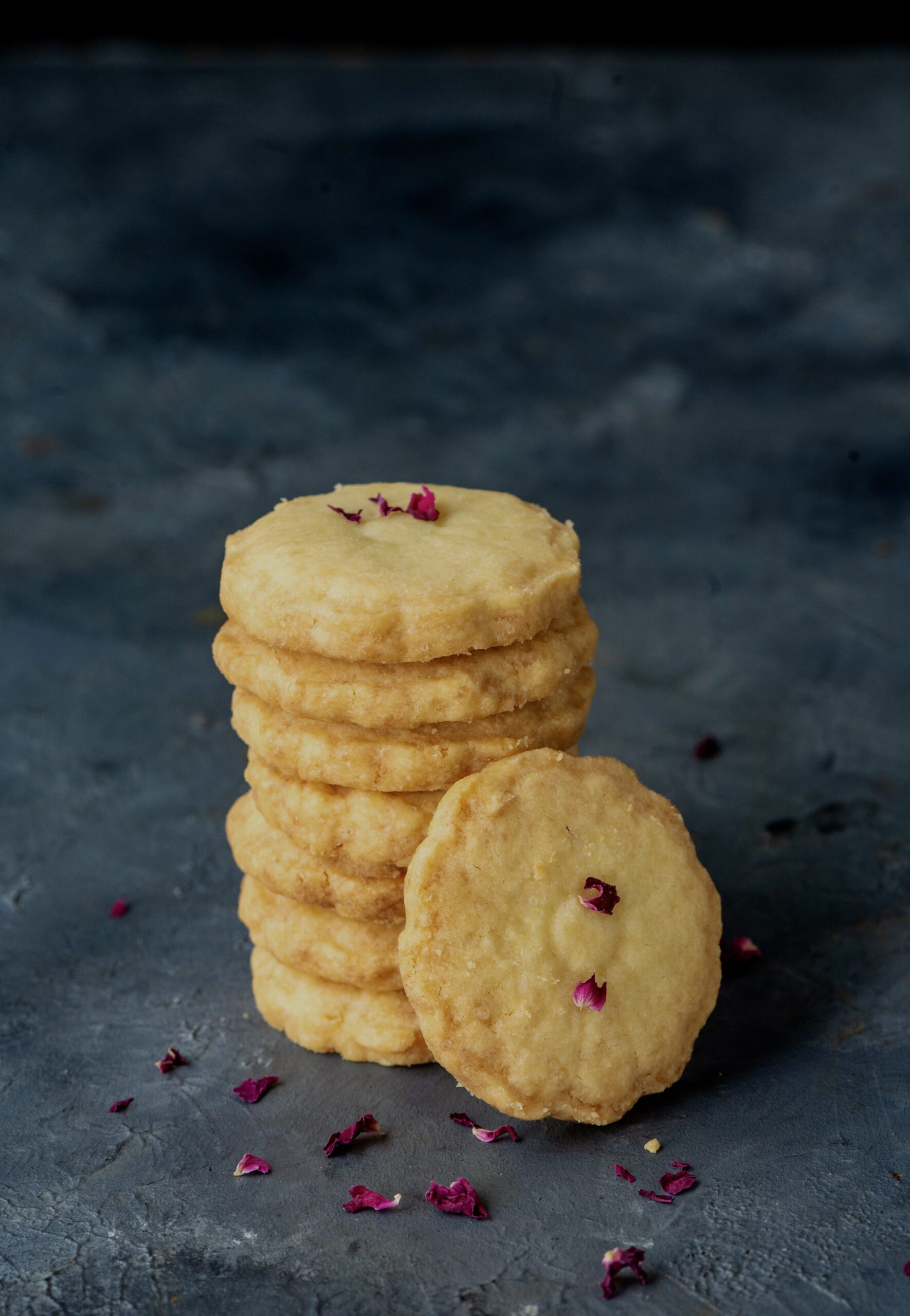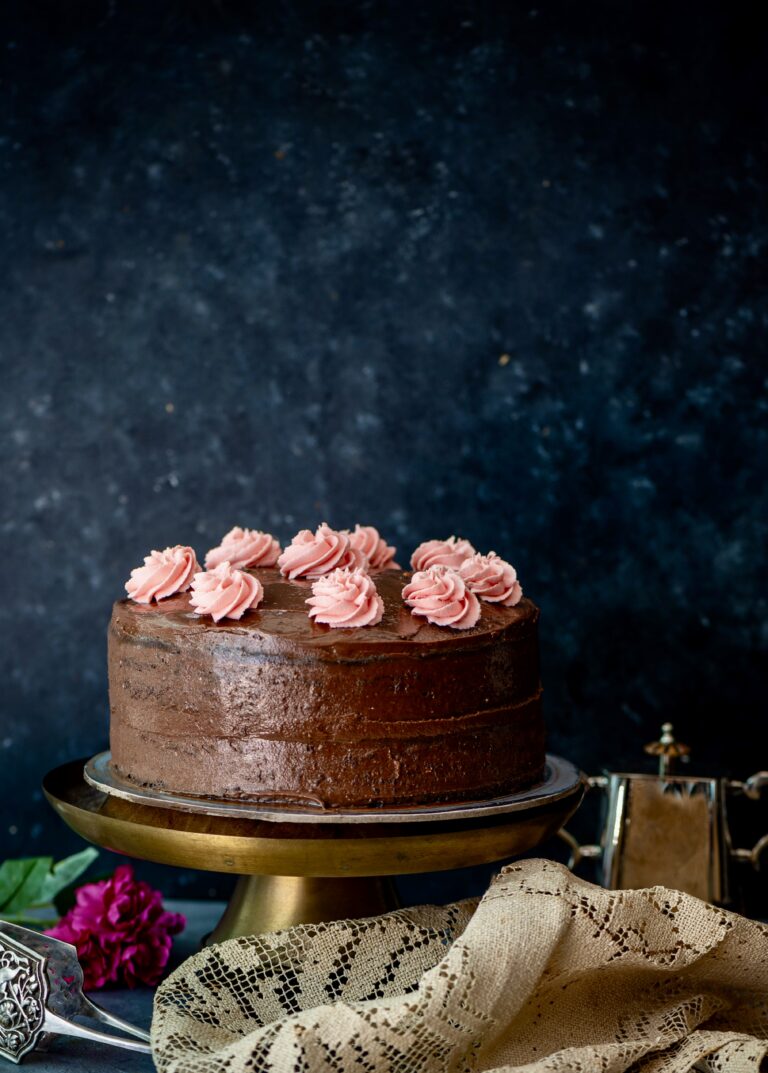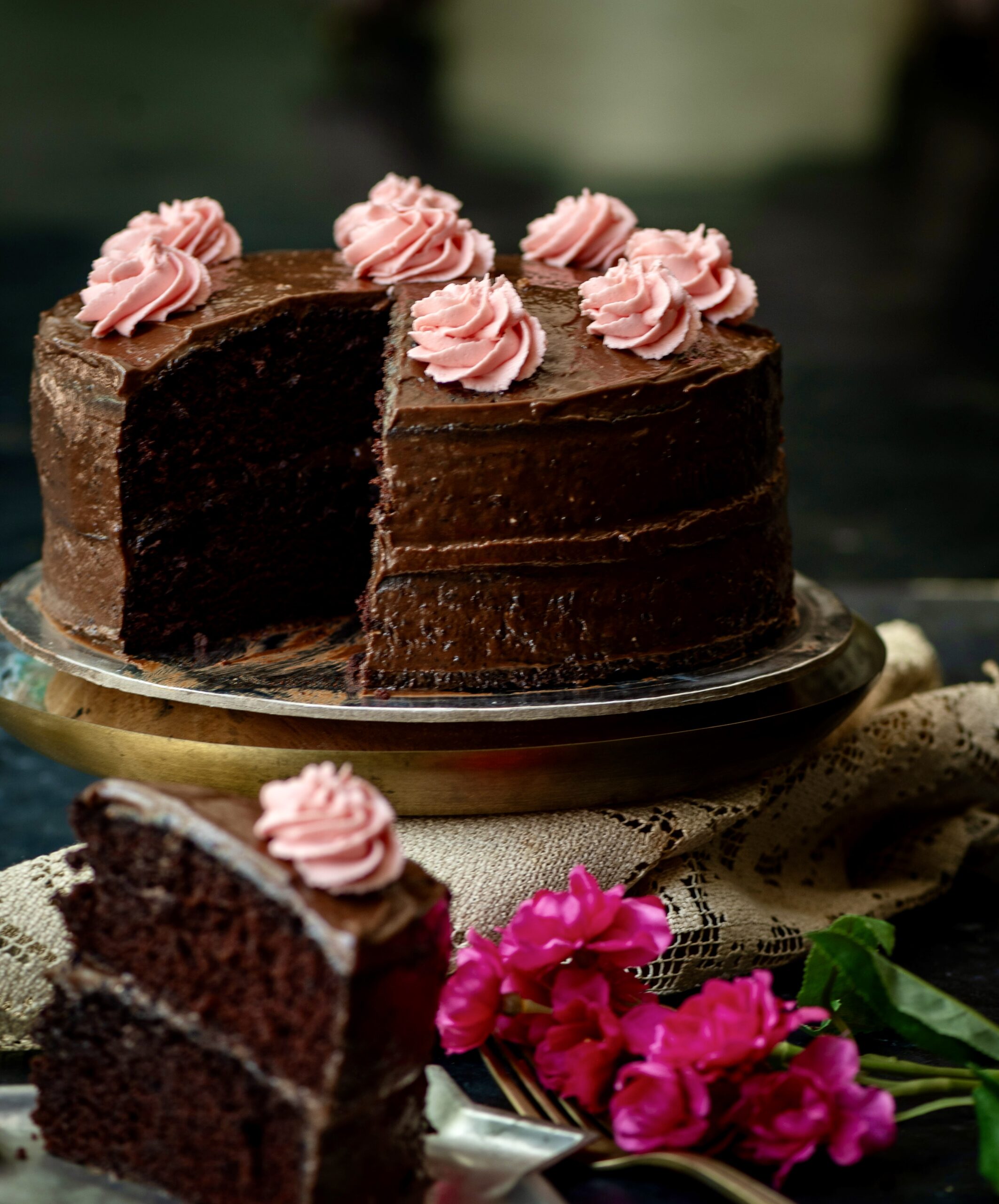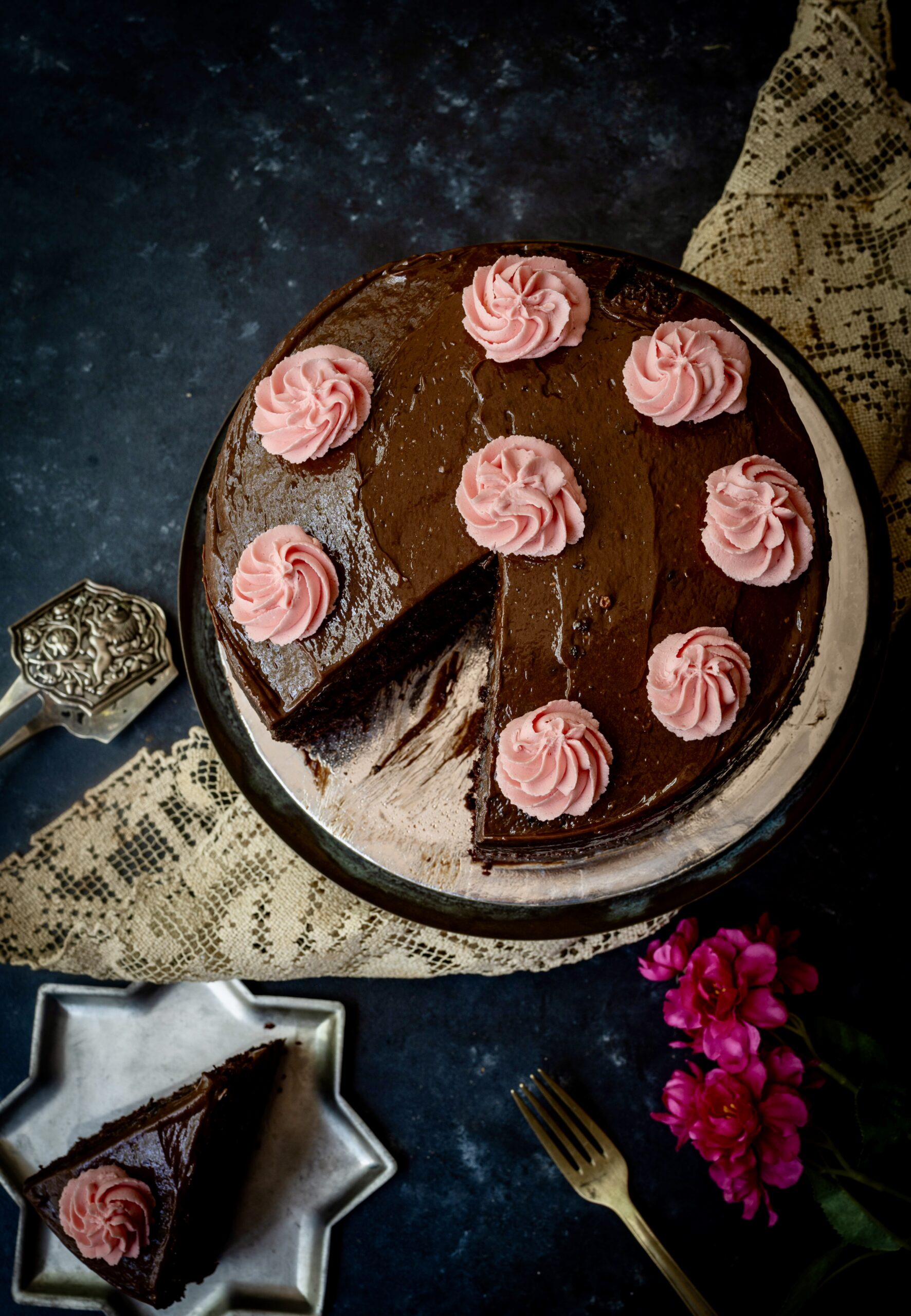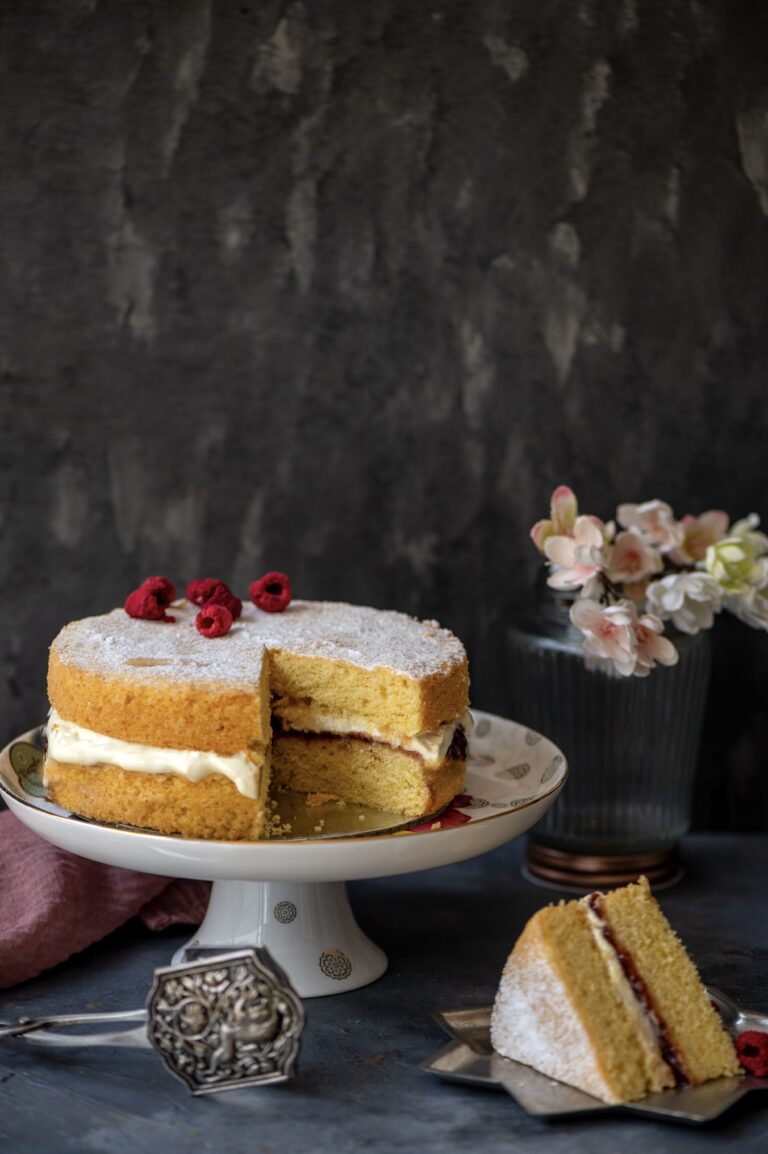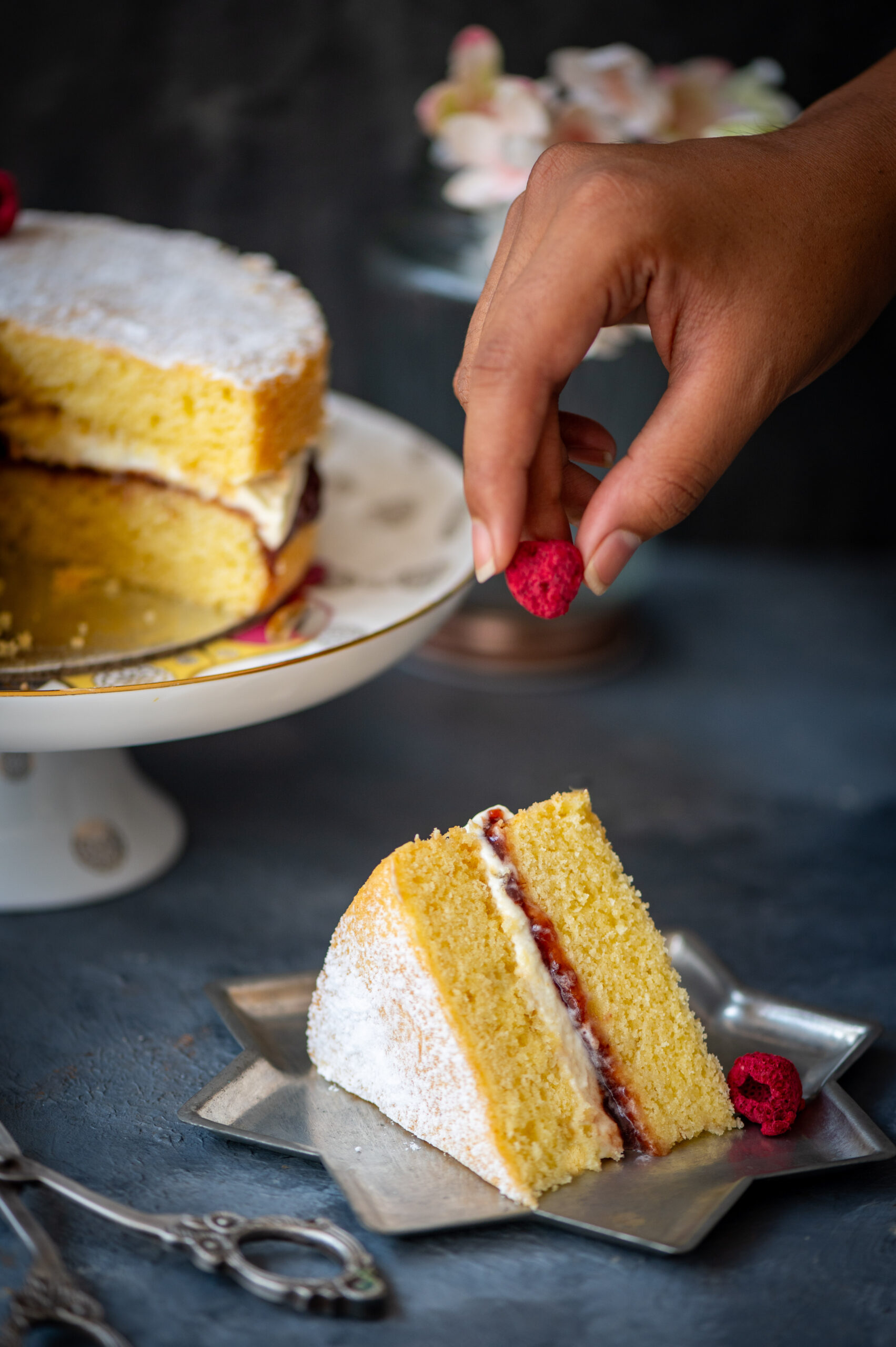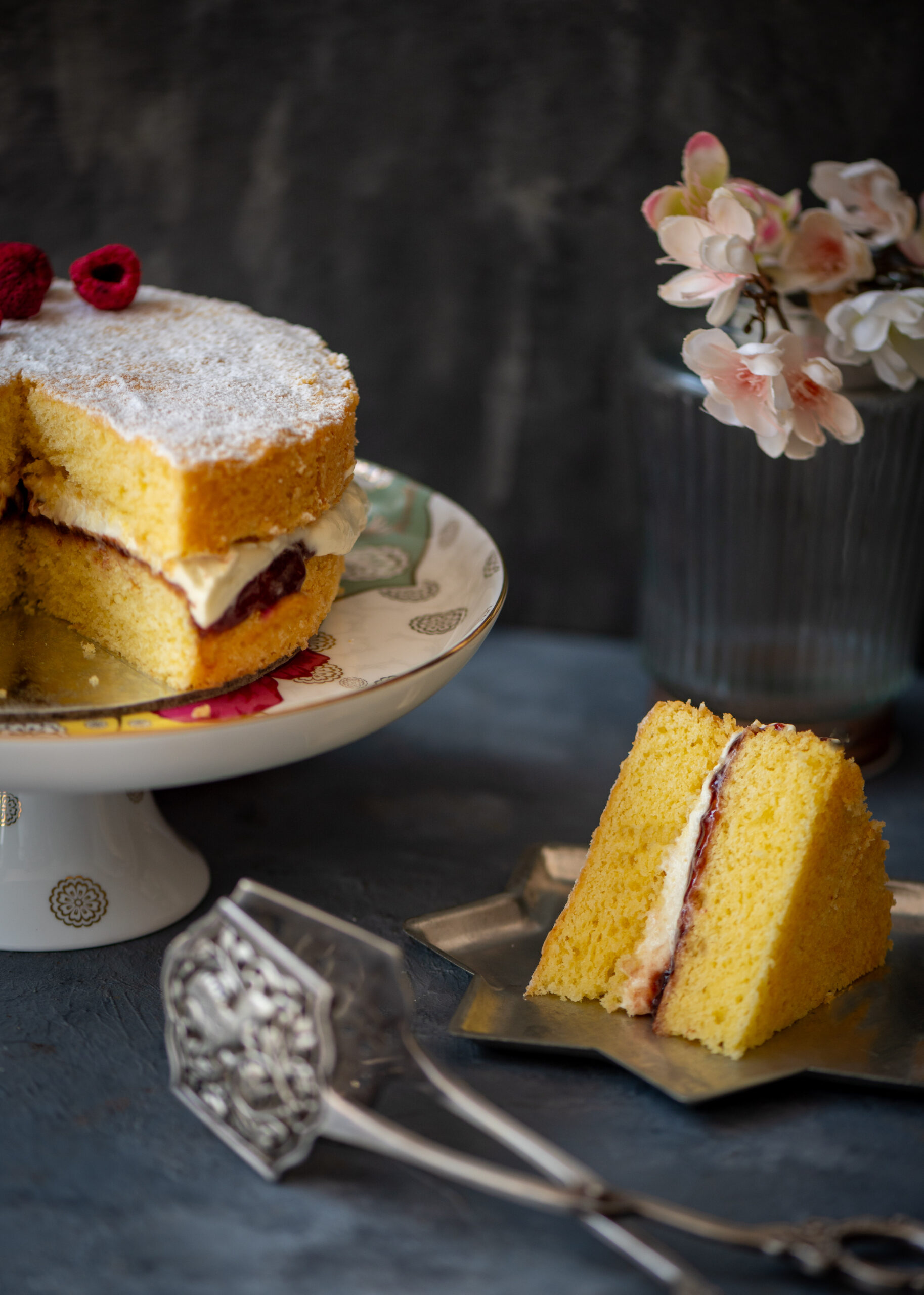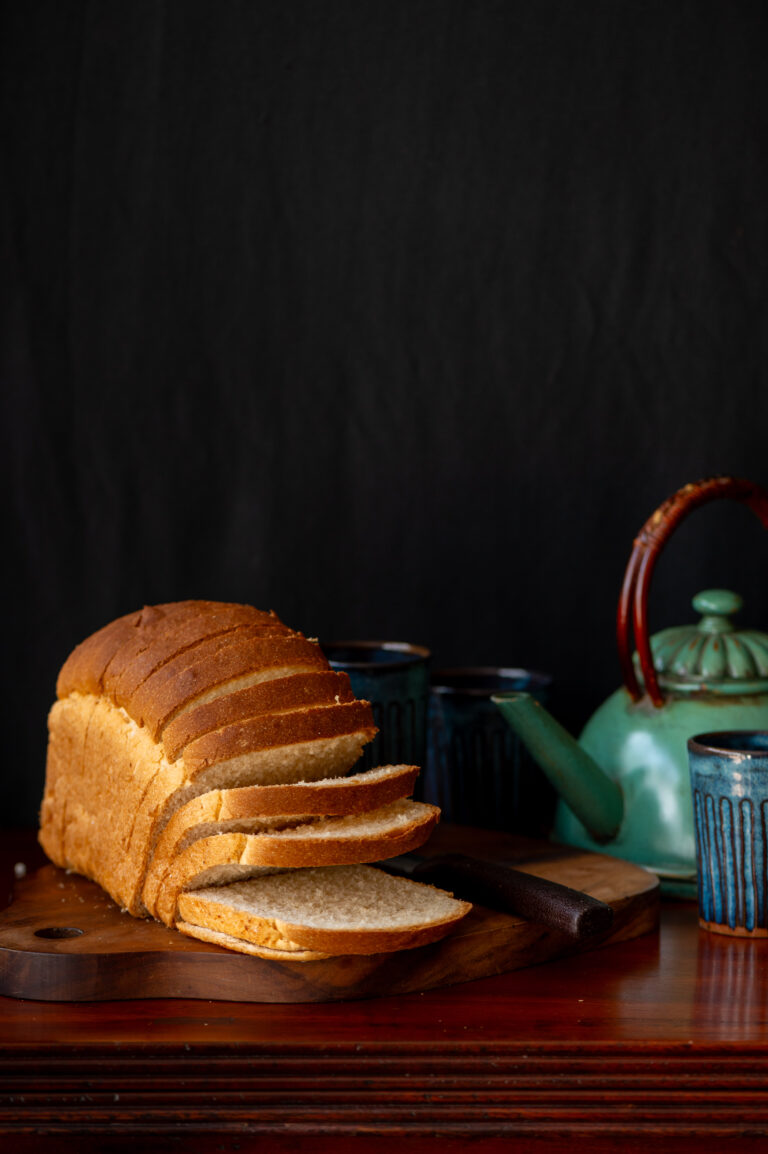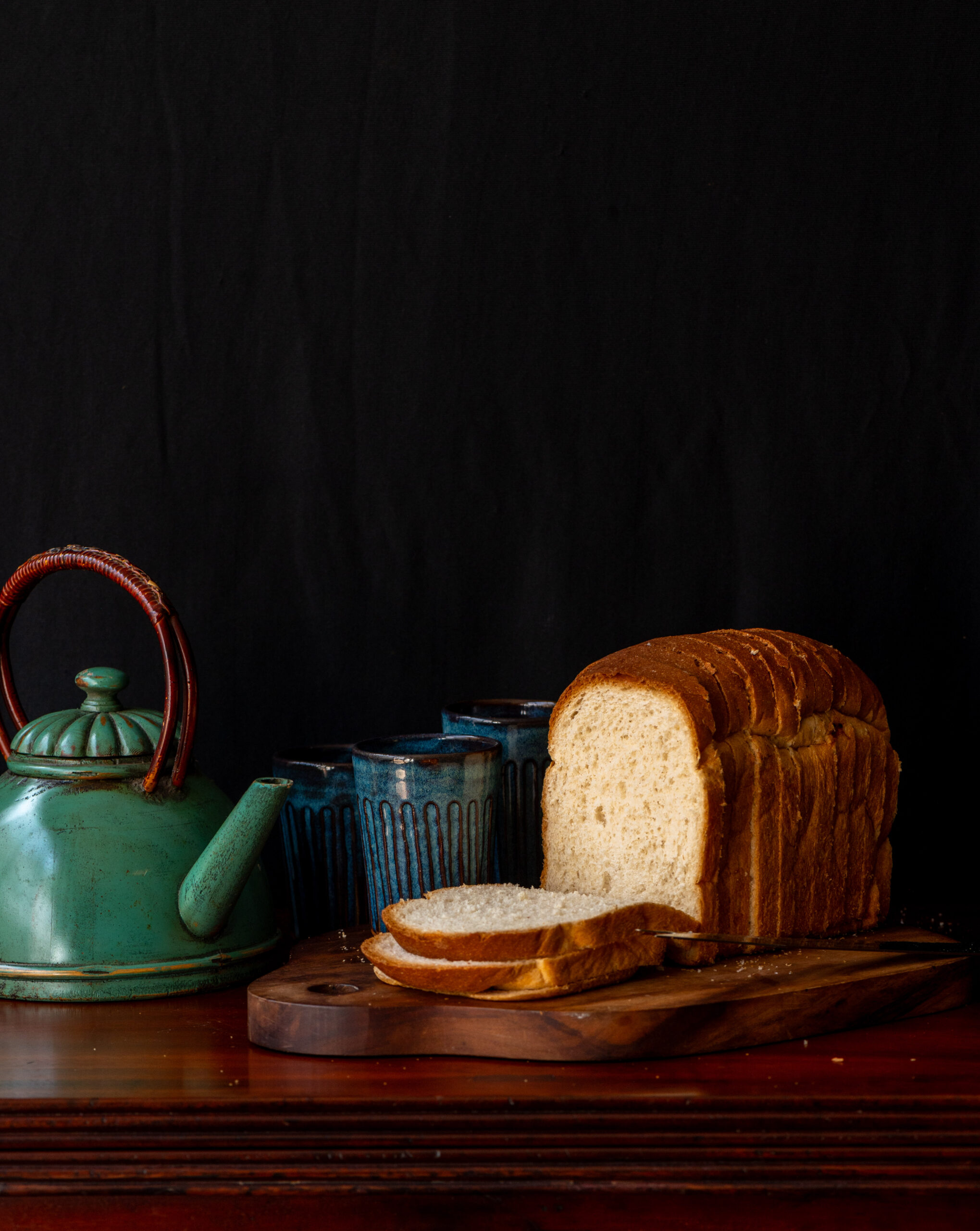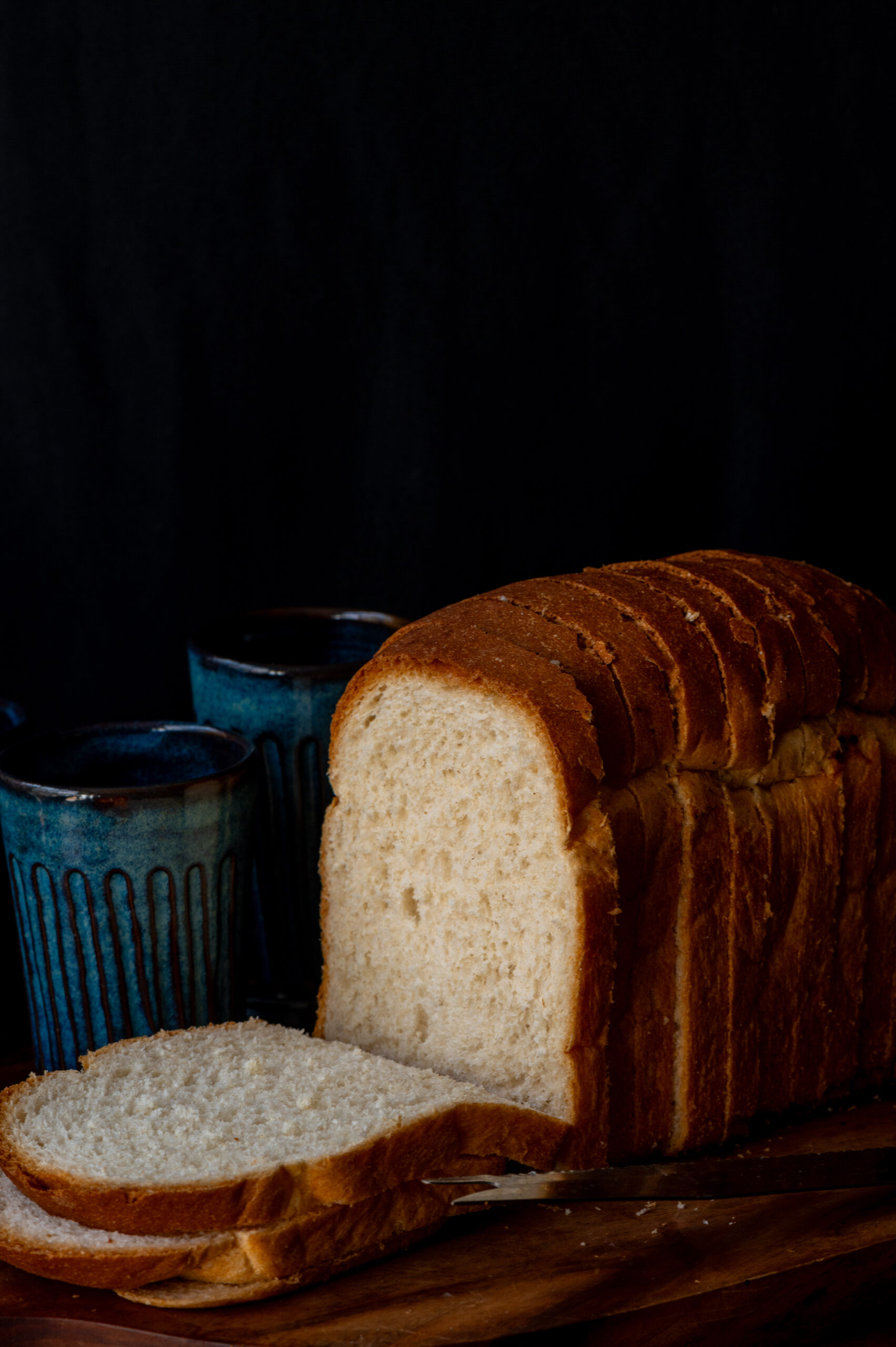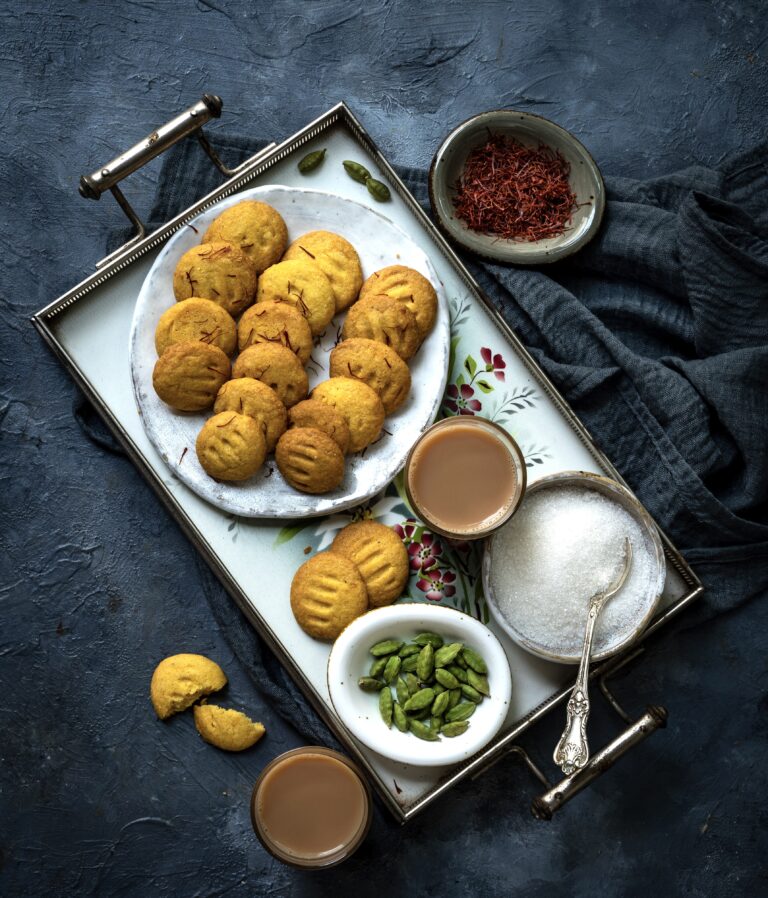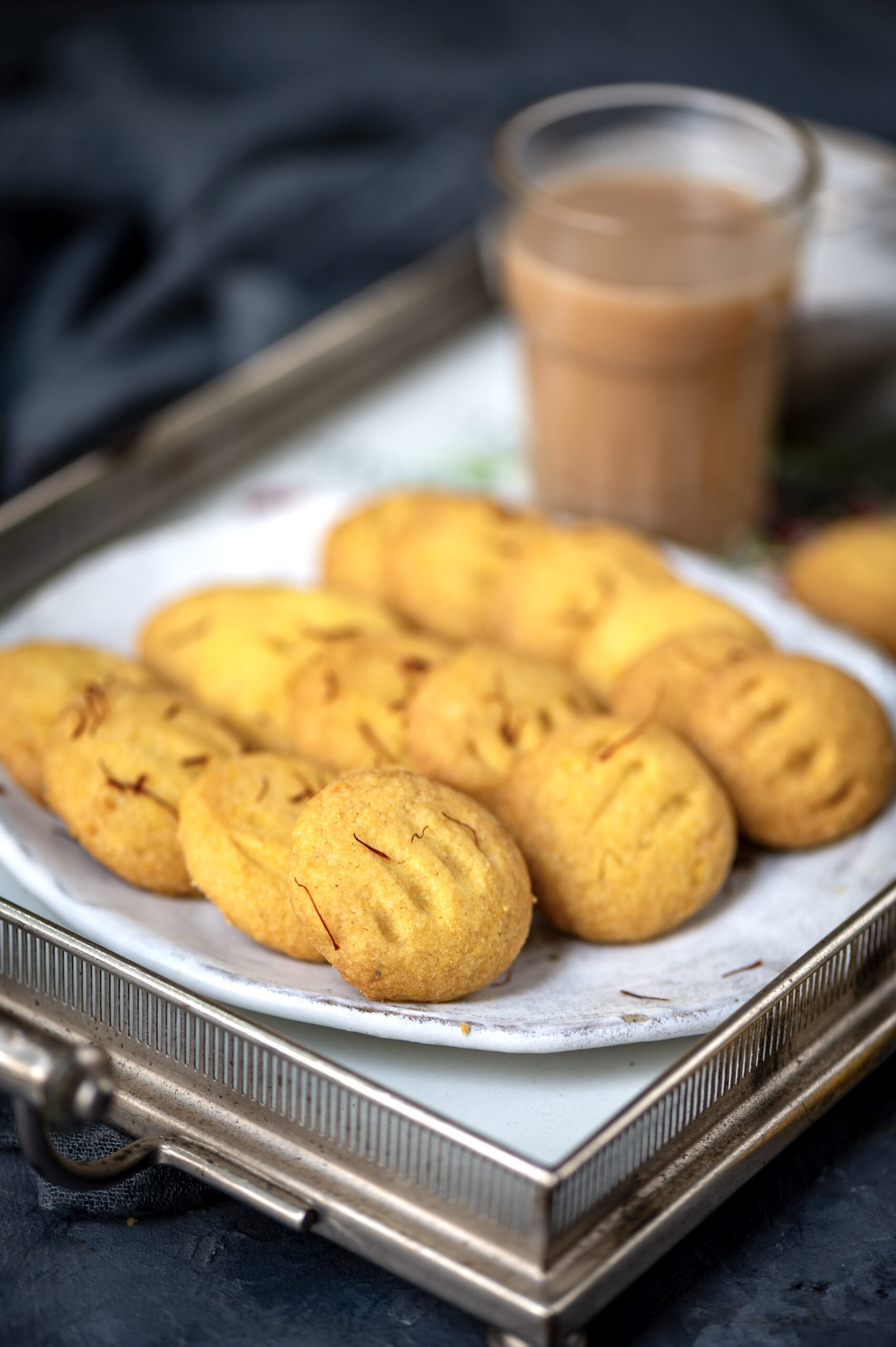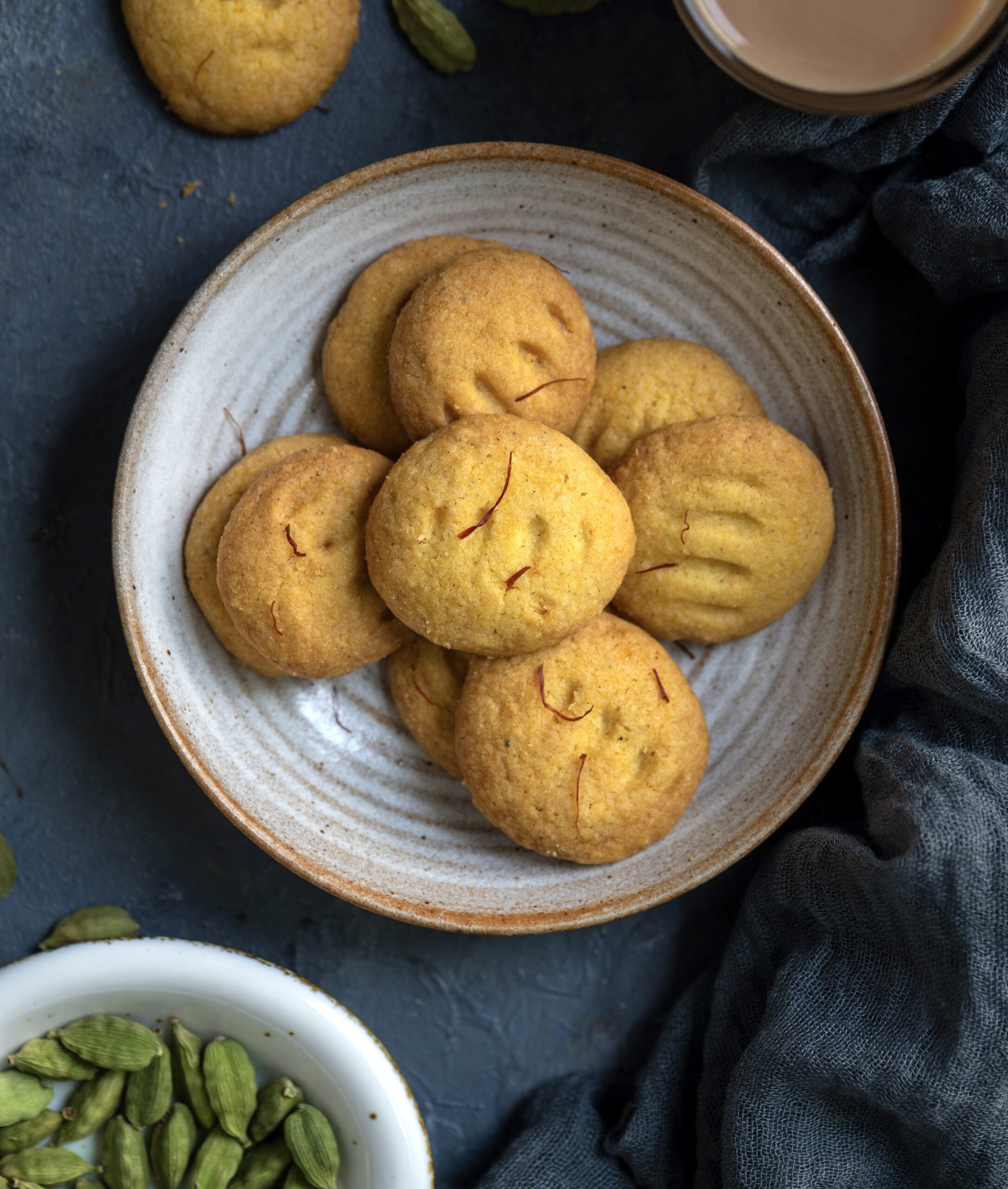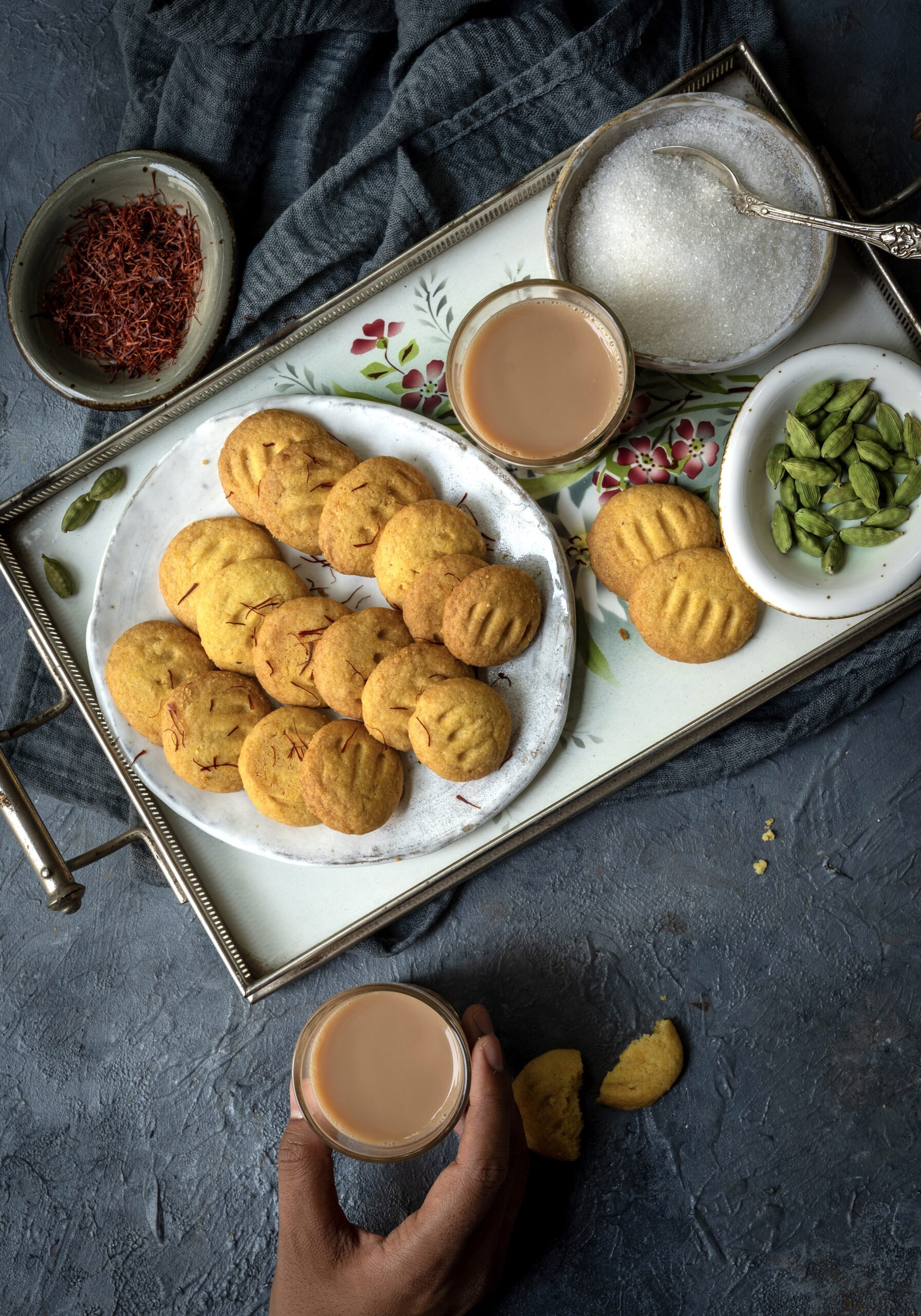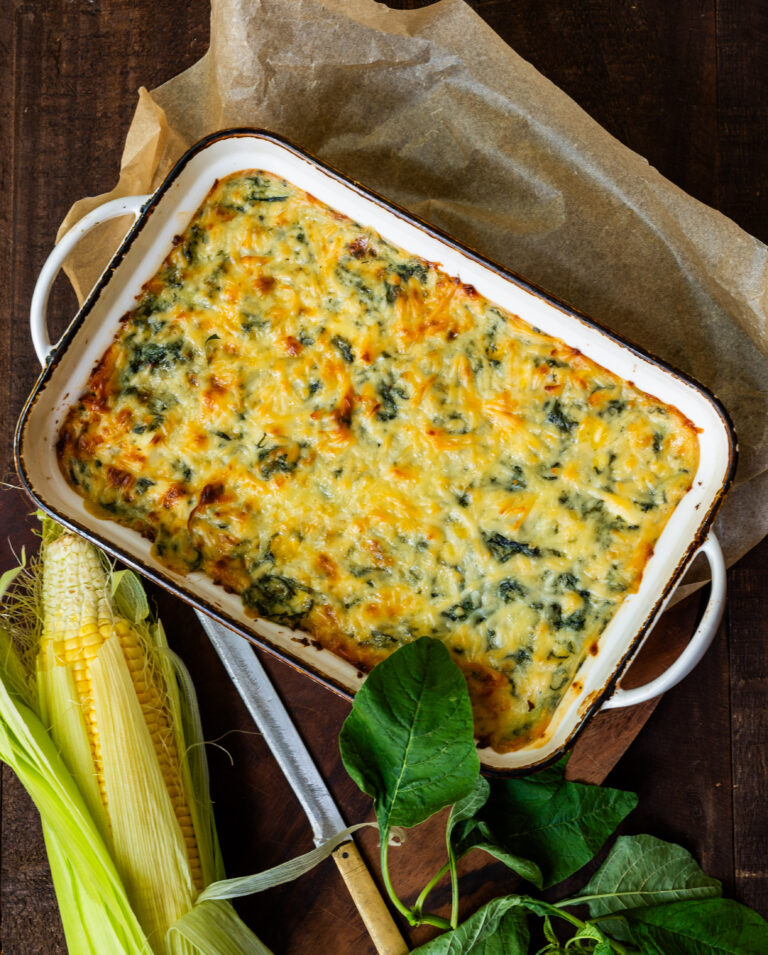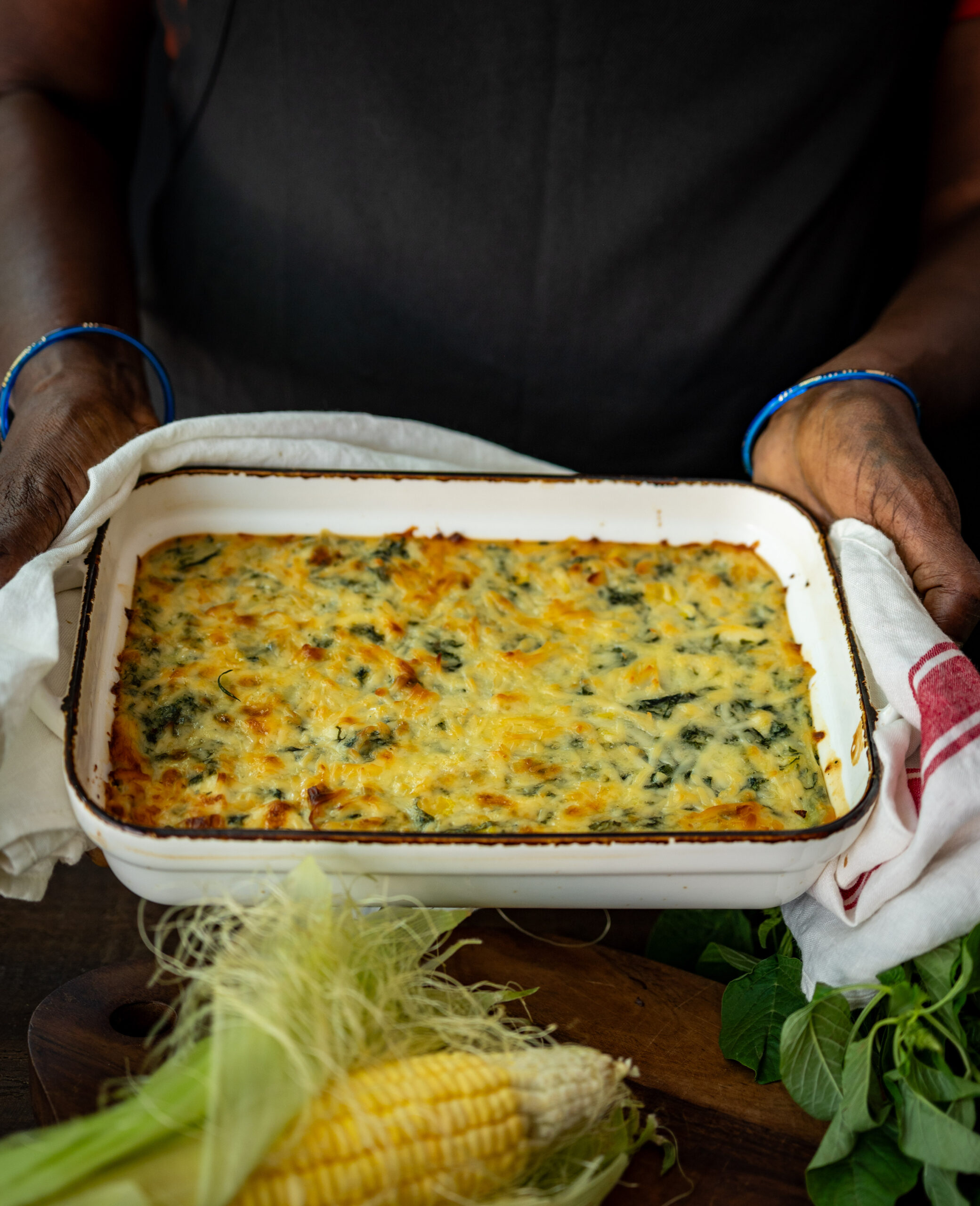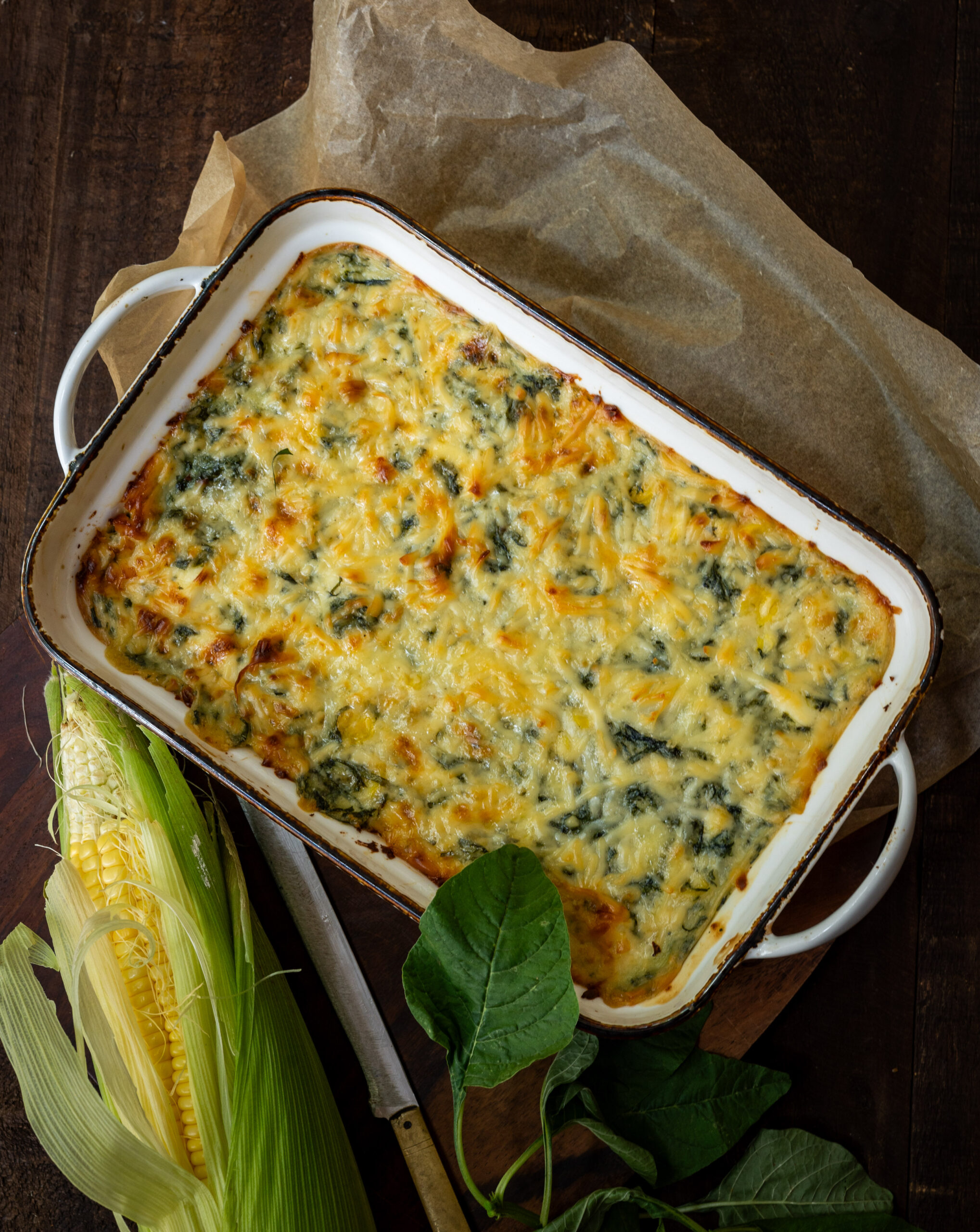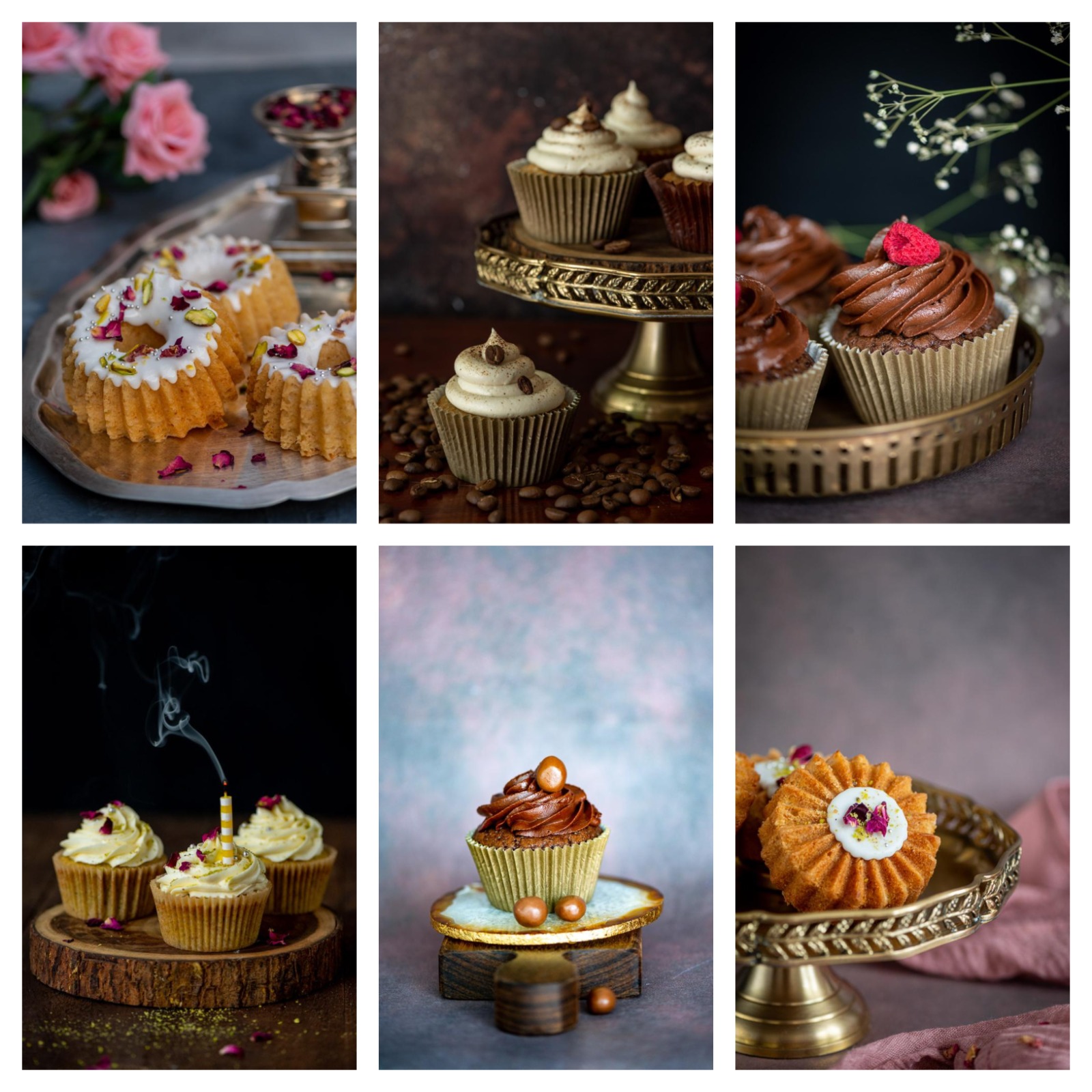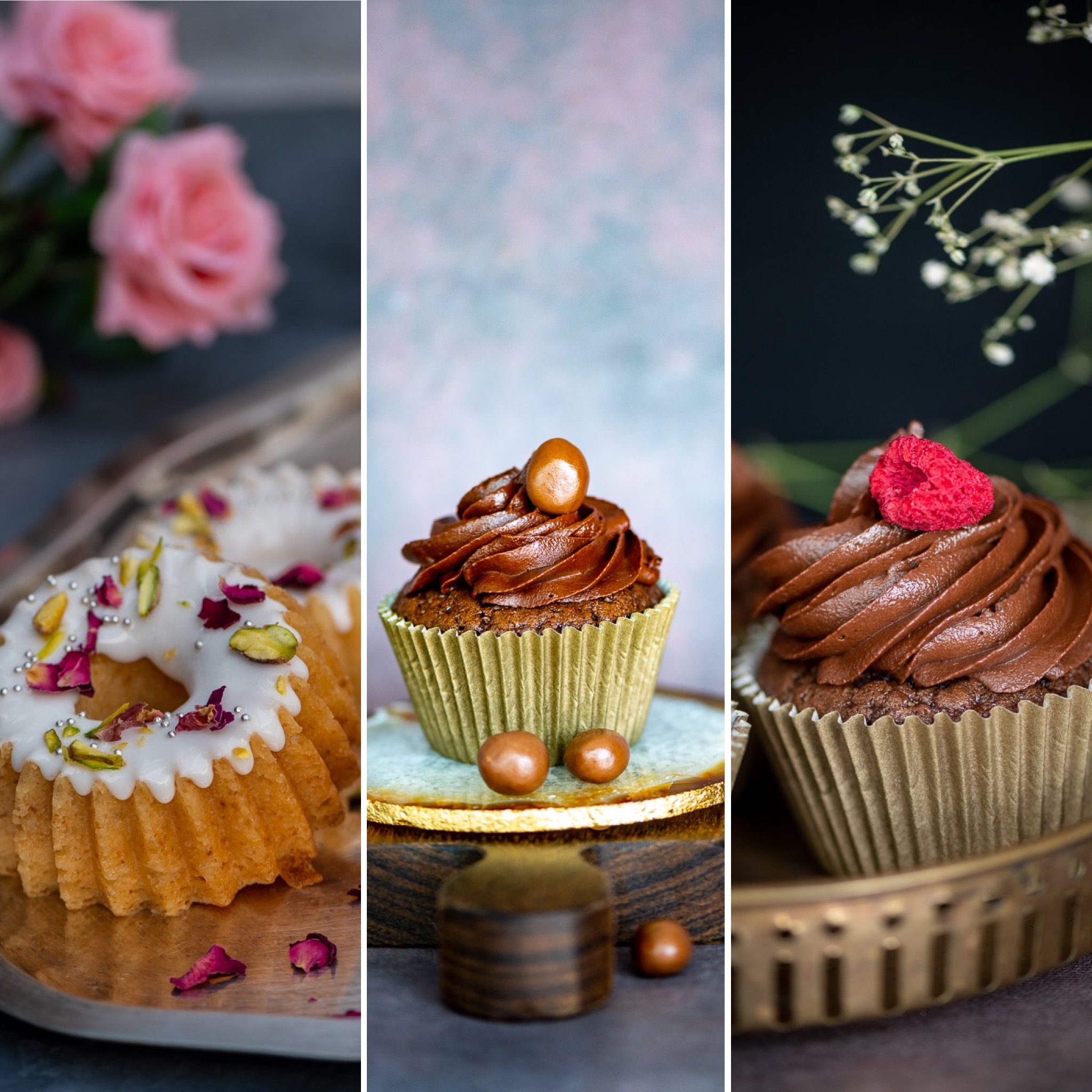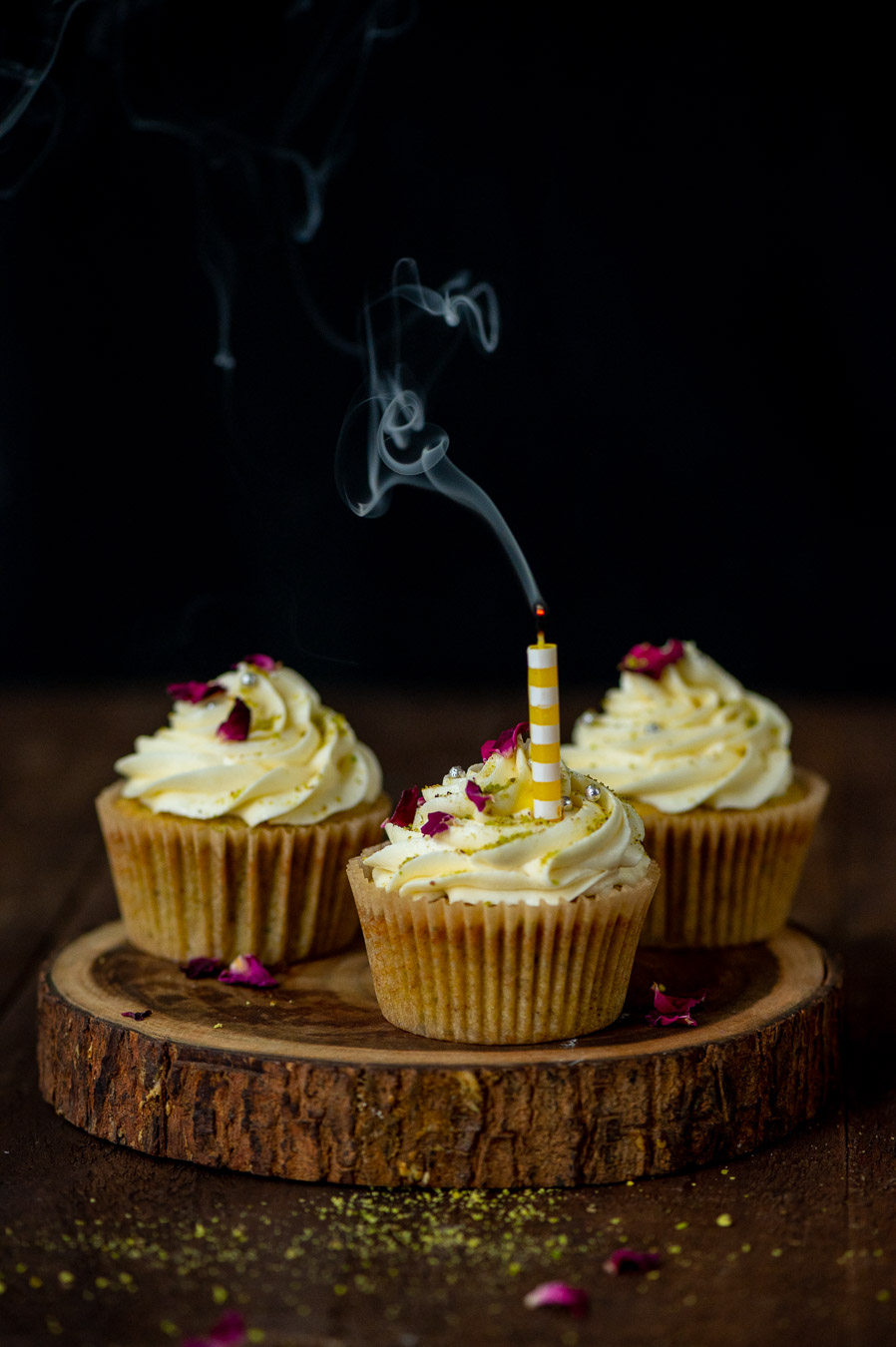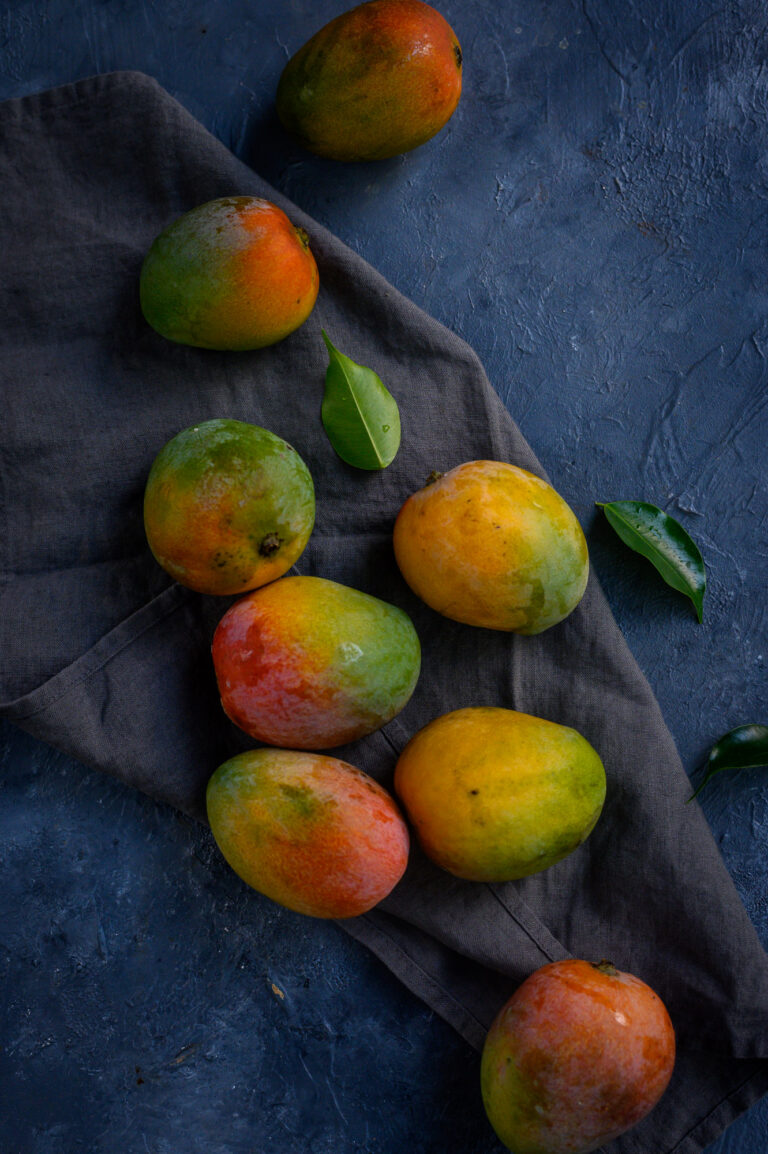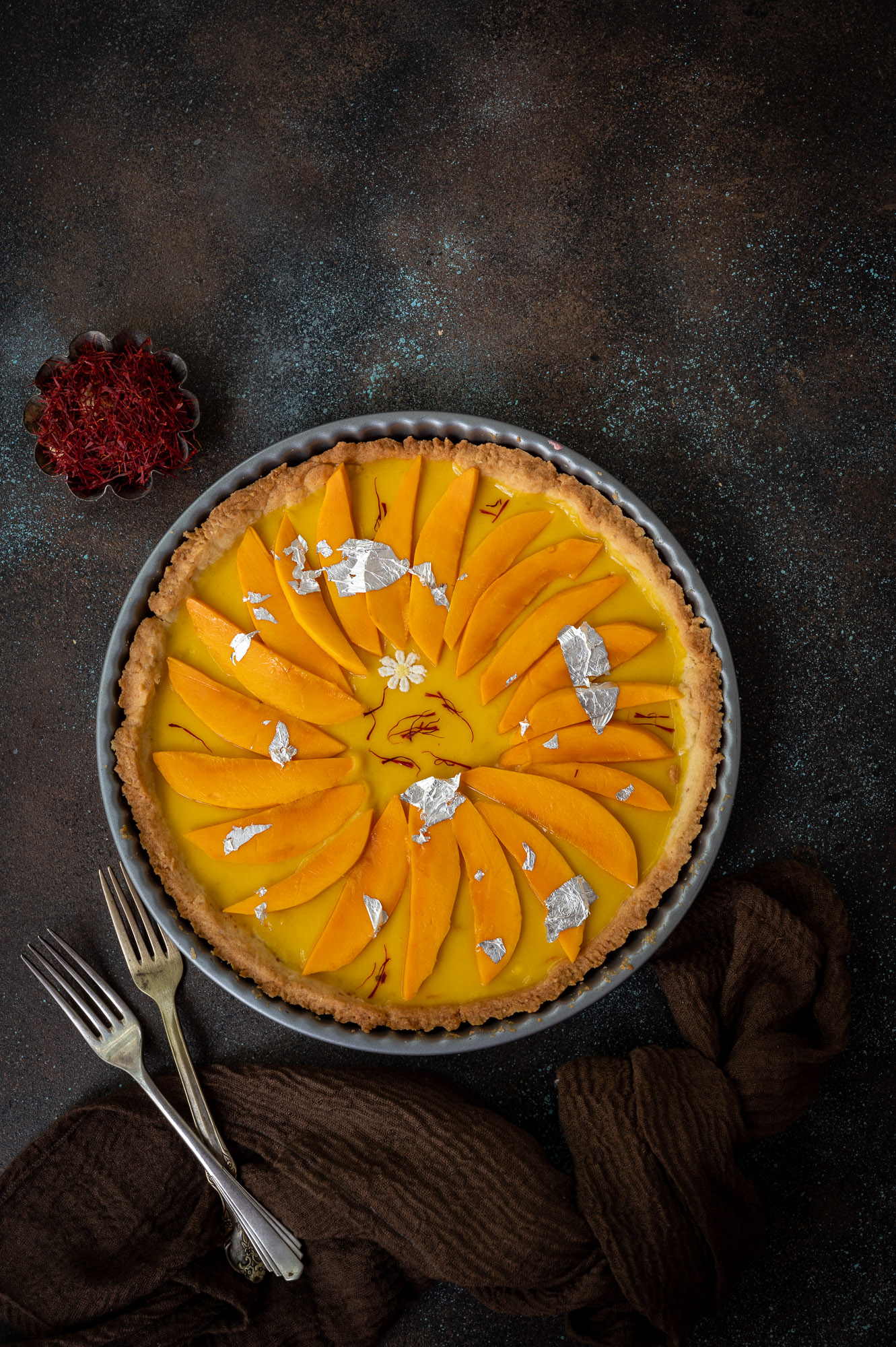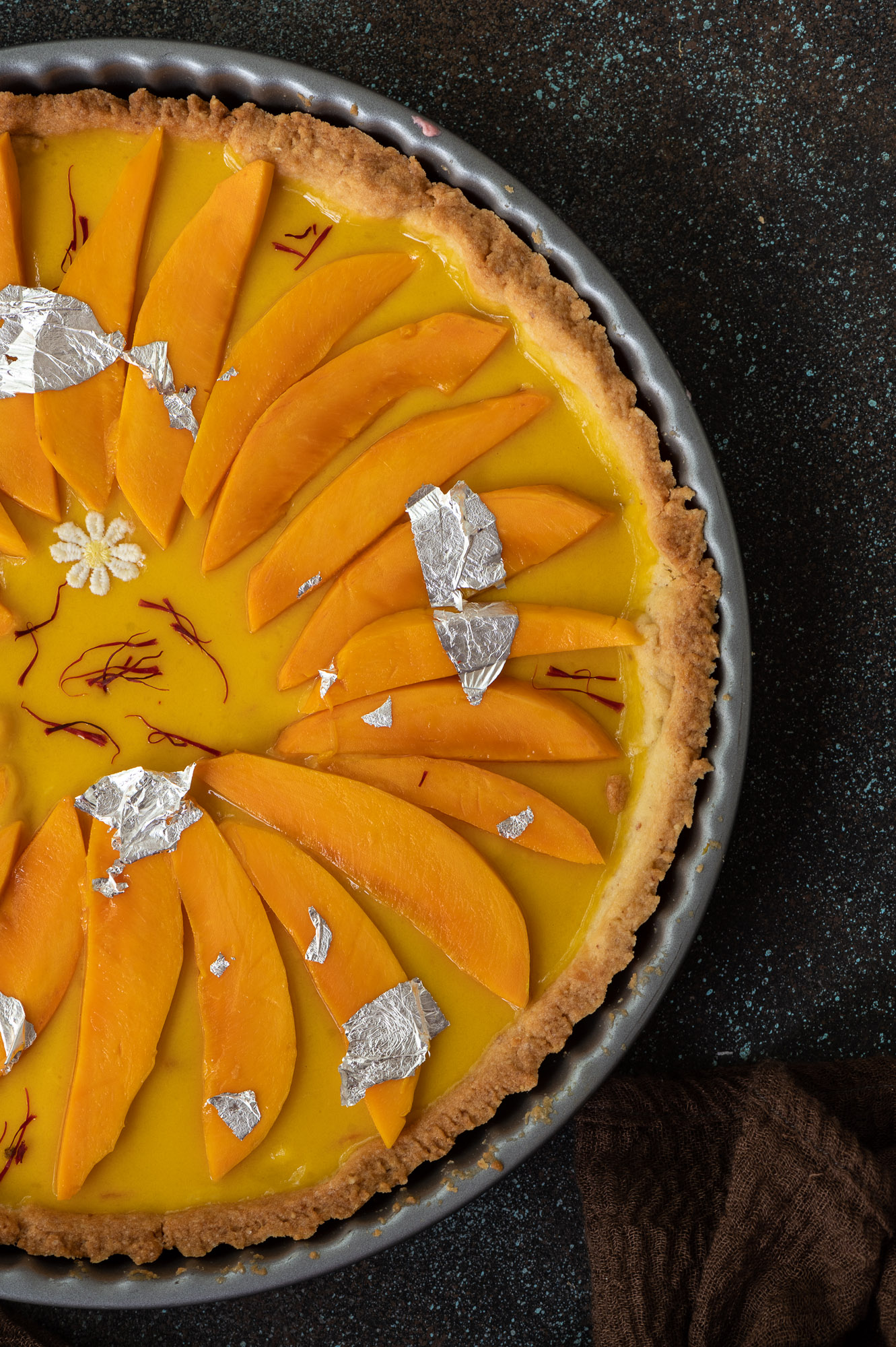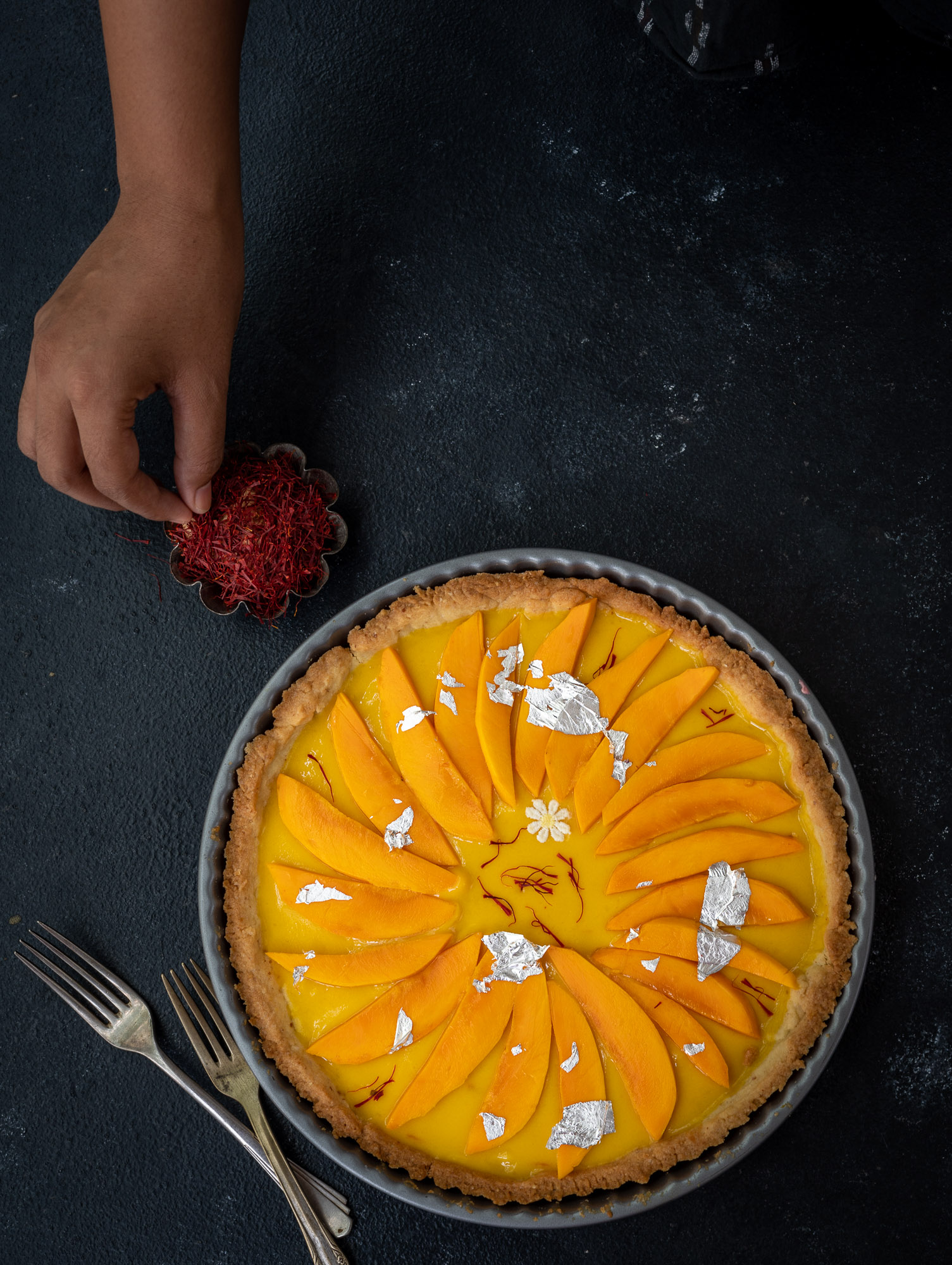As mentioned in my previous post, strawberry compote is a versatile topping that can be used on a wide range of desserts. After sharing the recipe for it, I was debating whether to prepare a cheesecake or a baked yoghurt using the same, as a suggestion for you in case you are exploring the compote’s usage too. I chose the latter. Summer is setting in in Chennai and a cooling yoghurt-based dish rather than a rich and heavy cheesecake just made sense. This baked yoghurt with strawberry compote, using seasonal strawberries, is ideal for the climate in every way.
We have recently had a number of celebrations in the family, and to be honest, given the quantity of sweet treats we have all been consuming, I have also begun to veer towards lighter desserts now.
Strawberries remain in season, and I want to make the most of them before we move towards mangoes. Already, I can see small fruits on my own trees as well as those around the city. The days are becoming longer and the heat is steadily rising. I have a feeling the mango harvests will be good this year, and look forward to them. But meanwhile, right now, strawberries continue to have my heart. Pairing them with yoghurt – an item that I relish perennially – makes for even more pleasure.
As I’ve mentioned in various posts, dairy products in general are considered sacred in Hindu traditions and used in rituals. Any form of dairy is enjoyed across India in general, as well. Come mango season, for example, a lot of buttermilk is going to be consumed across the country, as the coolant is used to counteract the heatiness of the fruit, as per Ayurvedic practices.
Yoghurt in particular is my personal favourite among the various dairy products, and the reason why I have not been able to go vegan even during periods when I have tried to adapt my diet as much as possible to those principles. I prepare it at home, and I have shared the method earlier too.
Yoghurt by itself is enough for me, but elevating this quintessential Indian component into a dessert that to me has both Continental and subcontinental influences was a very intriguing idea. I first enjoyed baked yoghurt at a popular café in Chennai. It was moist, soft and had just a hint of sweetness. The subtlety of the sweetness was what I found most attractive. Gujarati shrikhand and Bengali bhappa doi are similar in texture, but usually made much sweeter. To me the bhappa doi is one of the inspirations for my baked yoghurt. I don’t know much about the culture and cuisine, but my research also suggests that the two dishes are connected. Baking is not traditionally Indian, but I would venture a guess that baked yoghurt dishes on Indian menus may have evolved from bhappa doi.
While I grew up with shrikhand, on the other hand, I would have to say that I have come to prefer baked yoghurt to it. The minimal use of sugar is what creates the distinct advantage, in my view. Furthermore, by preparing strawberry compote or other toppings at home, I also get to control the sugar quantity for all aspects of the dish. If your strawberries are naturally sweet enough, you may not even have to add sugar to the compote at all.
That said, this baked yoghurt can be paired with a variety of other toppings too. Rose jam, mango purée or salted caramel are some wonderful options. The base itself is very versatile that way.
I began making baked yoghurt at home only recently, so I’m also excited about trying out new varieties. They are perfect for when you are entertaining guests, which is why I have suggested making them in individual portions below. Alternately, you can also prepare it in a large glass dish and spoon out the required portions.
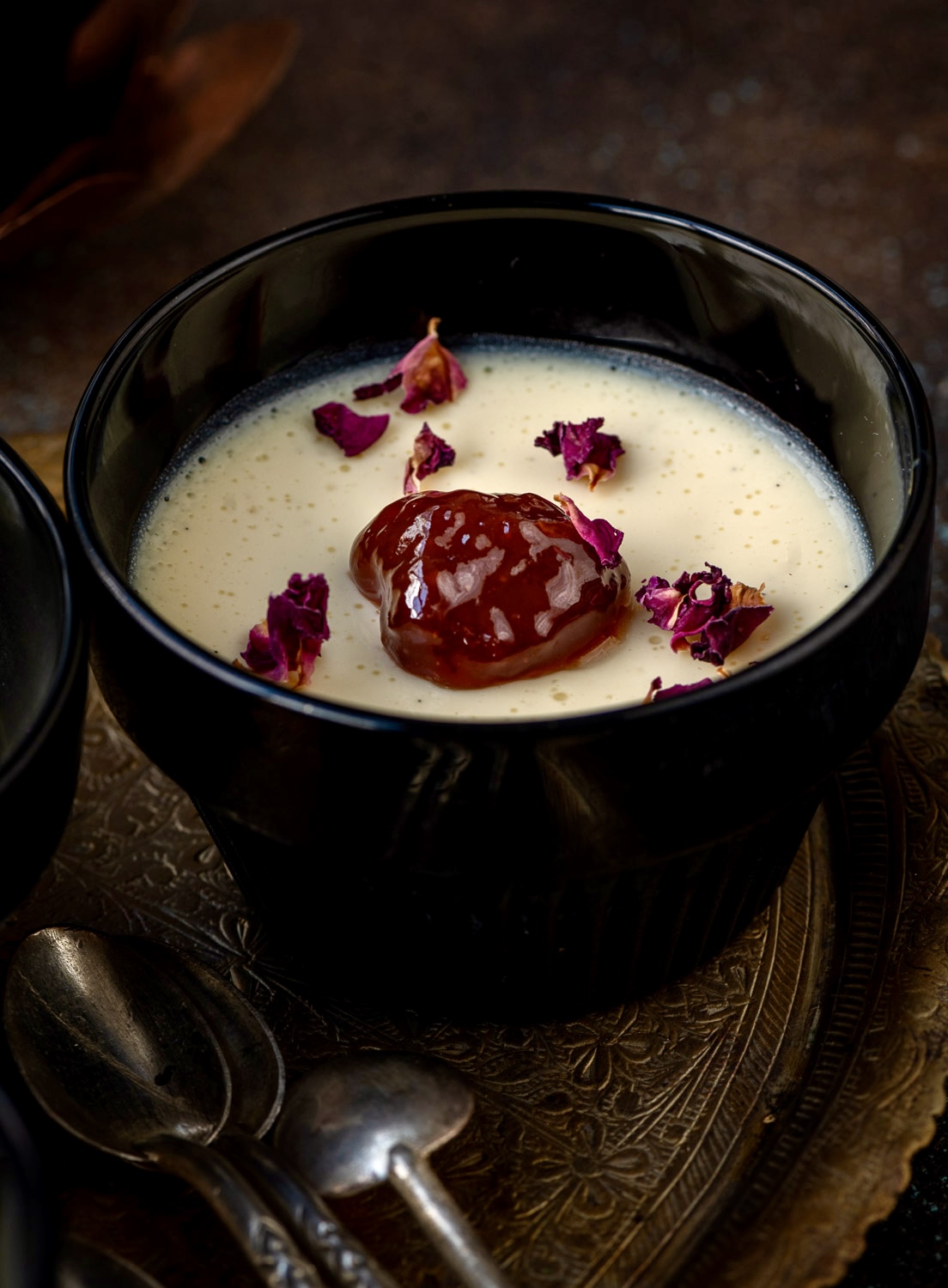
Baked Yoghurt With Strawberry Compote
(Yield: 5-6 ramekins)
250 grams yoghurt
200 grams condensed milk (or less, if you prefer)
50 grams cream
½ teaspoon vanilla extract
1 tablespoon rose water
Prepare a bain-marie by pouring water into a wide tray and placing it into the oven. Make sure that it has a tall lips or sides. You may want to check that the water will reach midway to the ramekins you will use. Preheat the oven to 160°C for 20 minutes.
Meanwhile, in a bowl, add all the ingredients gently one by one.
Using a whisk, gently bring them all together until there are no lumps. Pour the prepared mixture into the ramekins equally. You will get 5 or 6 portions depending on their size.
Place the ramekins into the bain-marie, after checking that the water is hot, and bake. This should take approximately 15 minutes, depending on your oven. Bake only until the centre looks jiggly.
Remove the ramekins from both the oven and the tray. Allow the baked yoghurt to cool completely and then refrigerate.
Serve chilled, with a spoonful of strawberry compote or any other topping of your choice.
If you’d like to enjoy more strawberries or more yoghurt this summer, I have a selection of recipes on this blog that feature either ingredient. Don’t forget that the former will soon be out of season, but as I said earlier, here in the Indian subcontinent we have something equally or perhaps even more wonderful to look forward to: mangoes! I am still thinking up some recipes that will highlight this them year, but in the meanwhile, I hope you’ll explore my archives.

